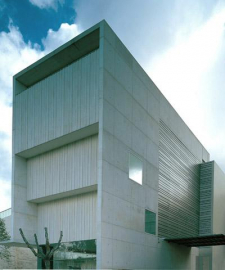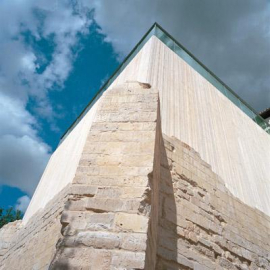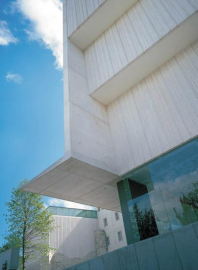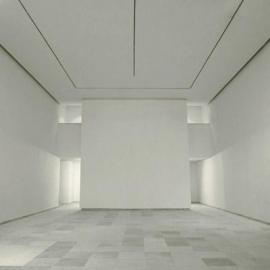Patio Herreriano Museum of Spanish Contemporary Art
The Monastery of San Benito sums up the history of the Benedictine order in Valladolid. Founded in 1390, in the old Alcázar, it increased its prestige for five centuries until Mendizábal's confiscation.
In a first stage, some Gothic pieces were added to the primitive nucleus - among which the chapel of the Counts of Fuensaldaña, built in 1453, and the church, from 1499 - stand out, which transformed the adjacent urban fabric. In the Renaissance, when he reached his peak as head of the order in the Peninsula, the new cloisters were built, by Rodrigo Gil de Hontañón, and the so-called Herrerian patio, the work of Juan de Rivero Rada. Since the expulsion of the congregation in 1835, the complex began to deteriorate, functioning as a barracks until in 1960 it passed into the hands of the City Council.
After its transformation into a museum, the old monastery will house the important Contemporary Art Collection, created in 1987 with the contribution of some thirty private companies, which includes some 800 works by Spanish artists - very significantly Ángel Ferrant- among 1918 and 1996. Two aspects summarize the intervention: the recovery of the Renaissance structure from respect for its historical value and its integration with the necessary elements to adapt it to the new use. The project enhances the dynamism and clarity of the routes compared to the static nature of the exhibition areas, without forgetting the forecast of future extensions. The construction is placed at the service of an abstract and neutral architecture that favors the enjoyment of the work of art. The new plasters and surface finishes - such as the limestone pavements or the oak carpentry - dialogue with the patina of the original walls. The collection is distributed in eight rooms, and the temporary exhibitions occupy some unique spaces, such as the vaulted area of the Gil de Hontañón room. The program is completed at a higher level with catering, administration and library services.
-
-





.jpg)
.jpg)